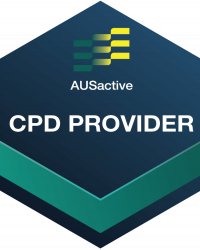Reformer Repertoire
Feet in Straps:
Openings
Alternate Names
Flex and Point
Derived From
Classical Reformer: Feet in Straps: Leg Circles
Primary Element
Mobility
Why for Primary?
To build mobility at the hip joints, and work on abduction and adduction of the hips.
Secondary Element
Strength
Why for Secondary?
To strengthen hip extensor and abductor muscles (gluteals and hamstrings), the hip adductors and to connect with, activate and develop the pelvis stabilisation muscles.
Tertiary Element
Stability
Why Tertiary?
The Feet in Straps series builds on the Footwork series and challenges pelvis stability whilst continuing to use the larger muscle groups of the legs.
Repetitions
8-10
Apparatus Setup
Suggested springs
- Number system: 1.5 springs
- Colour system: 2 x red springs + 1 blue spring
- Resistance: medium
Headrest position flat unless any neck issues or the client feels more supported with the head lifted using the headrest or a slightly deflated Pilates ball or cushion.
Foot bar one position is set at one position down from vertical, or on many Reformers the top angled position.
Plane of Motion
Frontal
Targeted Muscles
To connect with, activate and develop the pelvis stabilisation muscles the focus is on gluteus medius and gluteus maximus and the deep abdominal muscles transversus abdominis.
To create the external rotation at the pelvis gluteus medius, minimus and tensor fasciae latae are working to create and maintain the abduction throughout the exercise.
The drawing of the legs back together assists with activating the hip adductors, and the muscles in the medial compartment of the thigh.
There are five muscles in this group:
- Gracilis
- Obturator externus
- Adductor brevis
- Adductor longus
- Adductor longus
The hip extensors or muscles which open or lengthen the front of the hip and move the leg backwards are also working when bringing the legs down and together. Primary hip extensors include:
- Gluteus maximus
- Posterior head of the adductor magnus
- Hamstrings
Warnings
Not suitable for some hip, pathologies, or if the client is unable to work in a pain free range of motion during the exercise. If any clicking or clunking reduce the range of motion.
Execution
Lie supine on the Reformer in a neutral pelvis position place the feet into the straps (over the arch of the foot) and straighten the legs at a 45-degree angle to the carriage, without any tilting of the pelvis. Externally rotate the hips and softly plantar flex the feet.
Inhale to separate the legs to a 45-degree angle or wider, keeping the feet on the same horizontal plane. Exhale to softly dorsiflex the feet and press through the heels to draw the legs together and back to the start position.
Observations
Do a body scan of the client taking note of the following points
- Pelvis
- Are the hip bones even horizontally or is the client hitching, leaning towards or biasing one side?
- Can the client move their legs without the pelvis rocking, lifting and moving?
- Legs
- Are the thigh bones at approximately a 45-90 degree angle? There needs to be a control element ensuring the pelvis stays down and the legs aren’t coming out too wide without any control
- Are the legs coming back in together at a consistent pace or is one side leading?
- Feet
- Is the long strap around the arches of the feet with the toes relaxed?
- Are the fleet softly dorsiflexed on the return phase and plantarflexed on the outwards phase?
- Are the insides of the feet lifting or leaning outward? (supinated)
- Are the insides of the feet rolling inward? (pronated)
- Apparatus
- Is there tension on the springs the whole time? Or is the carriage crashing to the stopper or ‘park’ indicating a lack of control and a push by the client beyond their ideal range of motion? If the carriage is crashing encourage the client to reduce their range of motion and slow their movement down to focus on controlling the return phase, or reduce the spring load so the client can control the springs.
Learning Style Technique Cues
Auditory – word associations that connect mind and body
- The aim is to keep the pelvis still whilst the legs are moving on the same horizontal plane
- Say the client’s name when you’re about to interact with them
- The circle width should ensure the pelvis remains stable, it is not an adductor stretch
Visual
- Imagine gliding the feet against an imaginary foot bar in the air
- Imagine the legs are chopsticks and draw the legs together from the top
- You may demonstrate a part of the movement as a visual representation for the client to see using your arms in the air
Kinaesthetic
- Initiate the movement back through centre by pressing from the adductors of both legs evenly, and feel the draw through centre from the top of the leg.
- Feel the femur (thigh bone) drawing back into the pelvis or hip socket, activating the iliacus muscle and creating a feeling of control through the movements
Modifications and Variations
Regress the exercise by
- Increasing the spring setting to two red springs for more support and assistance with the pelvis stability component of the exercise
- Reducing repetitions and/or pace
- Reducing the range of motion so the client can focus on pelvis stability
- Regress to the Feet in Straps: Leg Circles or Feet in Straps: Peter Pan
Progress the exercise by
- Decreasing the springs to one red spring to further challenge pelvis stability
- Placing a slightly deflated Pilates ball or instability prop under the pelvis to further challenge pelvis stability
- Work towards Feet in Straps: Double Leg Lowers
Series and Transitions
This exercise is part of the Feet in Straps series which includes a range of other foot positions in the fundamental and the progressive repertoire. The Feet in Straps series can also be found in the Cadillac repertoire.
Transition to Feet in Straps: Double Leg Lowers by bringing the heels back together in a V-Position with the legs straight.

